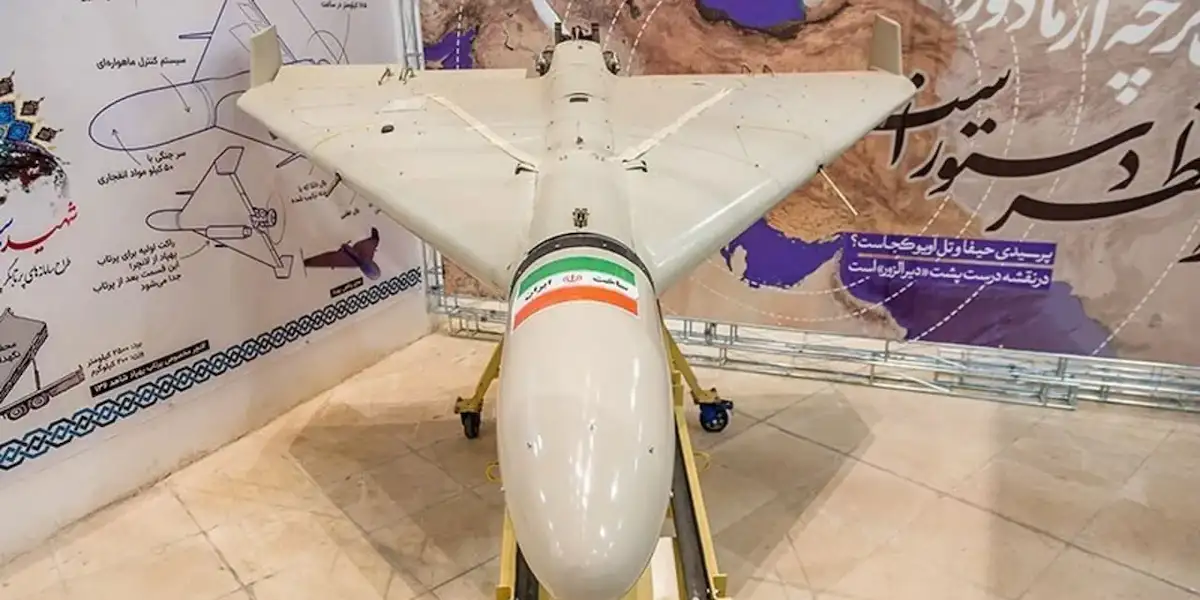Unmarked Drone Debris Reveals Iranian Origin
A new drone recovered in Ukraine has raised fresh concerns about the evolving nature of Russia’s aerial warfare. Unlike the typical black drones previously used, this one was white — and inside, it carried unmistakable signs of foreign origin. According to Ukrainian electronics expert Serhii Beskrestnov, known widely as Flash, the drone was equipped with a sophisticated AI computing system, a remote radio link, and anti-jamming hardware manufactured in Iran.
The drone bore no Russian military markings. Instead, its interior labeling conformed to a standardized Iranian format, written in English. While not definitive proof, experts suggest it’s plausible that Iran supplied the drone for Russia to test in real combat scenarios.
Russia Leverages Iranian Drone Designs
Since the fall of 2022, Moscow has leaned heavily on Iranian-designed Shahed drones to support its war in Ukraine. Though originally imported fully assembled, Russia now manufactures them domestically under license in a highly secure facility in the Tatarstan region, known as the Alabuga plant. This followed a $1.7 billion deal with Tehran that enabled the transfer of designs, expertise, and equipment.
The partnership has produced thousands of drones, which Russia has continually upgraded. Leaked documents from the Alabuga facility show how engineers iterated on the Iranian design — including the addition of decoy features under a classified initiative known as Operation False Target. These decoys are intended to saturate and overwhelm Ukraine’s air defenses before the real threats arrive.
Thermobaric Warheads and Jet-Powered Prototypes
Among the most alarming modifications is the development of a thermobaric warhead, which disperses fuel before igniting it, sucking oxygen from the air and causing catastrophic injuries. Russia has also experimented with jet-powered versions of the Shahed, according to Fabian Hinz of the International Institute for Strategic Studies. While these are technologically advanced — sometimes using engines identical to Iran’s cruise missiles — they are too expensive for frequent use, especially when factoring in maintenance and availability.
Beskrestnov confirmed that two jet-powered variants were found in Ukraine this past May, but they’ve yet to become a staple of Russia’s drone arsenal.
AI, Remote Operation, and Jam Resistance
The most recently discovered drone contained one of the most advanced electronics packages yet seen on the battlefield. Its AI computing unit, long-range radio communications, and high-definition targeting camera point to a new class of UAV capable of adaptive missions. Unlike previous drones that followed preset flight paths, this model can be redirected mid-flight — a game-changer for real-time targeting.
"This drone can change course on command and strike moving infrastructure targets with precision." — Serhii Beskrestnov, Ukrainian drone specialist
The drone also featured eight antennas — double the usual number — increasing its resistance to Ukraine’s electronic warfare capabilities. While older Shaheds could be thrown off-course by jamming, the new variant appears resilient and responsive under hostile conditions.
Global Sanctions and Iran’s Supply Chains
Despite sanctions, both Russia and Iran continue to access Western components through global grey markets. The new drone’s internal hardware includes parts sourced from Russia, China, and the West. While Israel’s recent airstrikes targeted Iranian military facilities, it’s too early to determine their effect on Tehran’s ability to supply drones to Russia.
That said, experts suggest if Iranian factories producing engines, anti-jamming systems, or guidance modules were disrupted, Russia’s production pipeline could face bottlenecks in the months ahead.
"If Iran's drone factories were hit, Russia’s long-term supply chain will feel the strain." — David Albright, Institute for Science and International Security
Tactical Shifts and Rising Drone Effectiveness
While hardware evolves, so do Russia’s strategies. Moscow is deploying drones at various altitudes to evade detection — flying high to avoid small arms fire and low to slip past radar systems. Increasingly, large-scale swarm tactics are used to exhaust Ukrainian air defenses. These involve waves of cheap decoy drones followed by a few lethal ones designed to punch through weakened defenses.
Ukrainian defense officials confirm that Russia has started using dive-bombing tactics and coordinated multi-drone assaults that stretch resources thin. Shahed drones are now part of integrated operations clearing paths for cruise missile strikes.

The results are telling. Data reviewed by the Associated Press, compiled from Ukrainian air force reports, indicates a marked increase in Russian strike success. In November 2024, only 6% of drones hit intended targets. By June 2025, that figure had climbed to 16% — with some nights seeing up to 50% of drones bypassing defenses.
Ukraine’s Ministry of Defence attributes the increase to sheer volume, improved decoys, and more sophisticated guidance systems.
Strategic Uncertainty Ahead
Whether Russia can sustain this momentum remains to be seen. Israeli strikes on Iranian infrastructure may eventually degrade the flow of drone components. If Tehran’s capacity is compromised, Russia will be forced to seek new sources or slow its domestic production.
"Russia is not going to be able to get as much assistance from Iran as it has been." — David Albright, Institute for Science and International Security
For now, the battlefield continues to serve as a testing ground for Iran’s military hardware and Russia’s evolving drone doctrine — with Ukraine caught in the crosshairs of this growing axis of drone warfare.
Source: Euronews, June 25, 2025.






